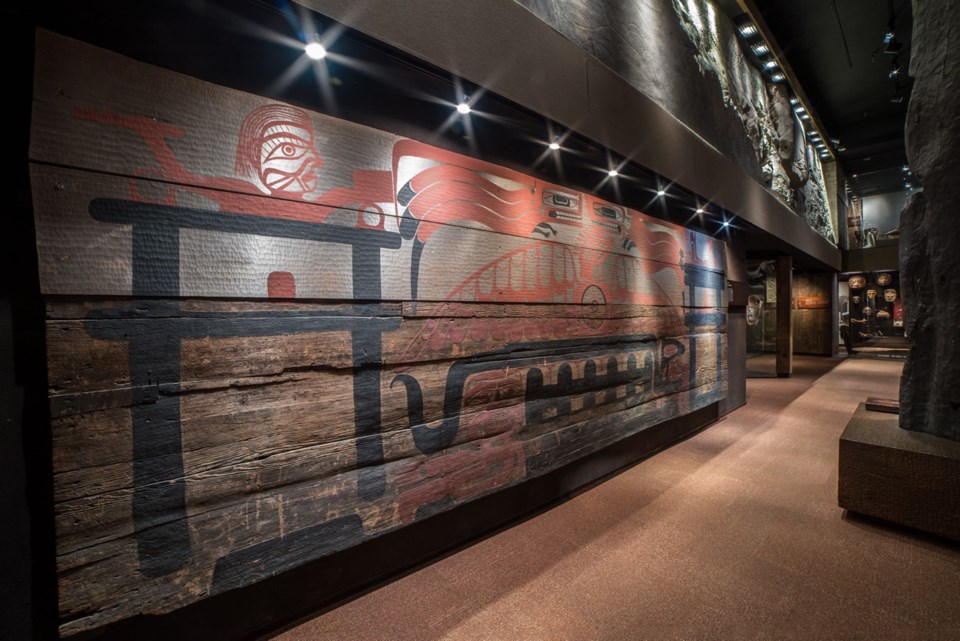Several Huu-ay-aht artworks and cultural treasures that have been in Royal B.C. Museum collections and publicly displayed for more than a century have been returned to the First Nation’s traditional territory.
The Huu-ay-aht nation reclaimed a significant part of its cultural heritage Friday in a legal transfer resulting from the 2011 completion of the historic Maa-nulth First Nations Final Agreement.
Plans called for the ultimate return of 17 Huu-ay-aht cultural treasures to the nation’s traditional territory for permanent public display at the Huu-ay-aht government office in Anacla, the village near Bamfield where 15 per cent of about 750 Huu-ay-aht citizens live. The remainder live in Port Alberni, and throughout Vancouver Island, Vancouver and other B.C. communities.
This follows a ceremonial welcome and display during the Huu-ay-aht’s annual three-day People’s Assembly in Port Alberni, concluding today.
The cultural treasures include a painted wooden ceremonial screen that for decades was displayed in Royal B.C. Museum’s First People’s Gallery; two Thunderbird masks, including a collection of 37 small carvings of birds; five objects associated with whaling, and eight basketry items.
“The return of these cultural treasures is a clear sign of reconciliation that will not only help us heal our ancient spirit, but it will also revive it,” said Huu-ay-aht Chief Councillor Robert J. Dennis Sr.
It marks the first time a transfer of artifacts has been completed under the terms of the Maa-nulth Final Agreement, which identified 51 Huu-ay-aht treasures that are expected to be returned.
“The Royal B.C. Museum has held these treasures in trust for their rightful owners, who are now taking them back to their place of origin and deepest meaning, their cultural home,” said museum CEO Jack Lohman.
“We hope that this act of repatriation will inspire other museums to do the same in the spirit of reconciliation.”
The remaining 34 cultural treasures will be transferred from the RBCM when the Huu-ay-aht, whose lands are located in Barkley Sound at the entrance to Alberni Inlet, request it.
John Rustad, minister of aboriginal relations and reconciliation, says the province is committed to work with First Nations communities to create economic and social change.
“Huu-ay-aht First Nations’ cultural treasures play an integral role in the continuation of their culture, values and traditions, and the province is committed to doing everything it can to reunite interested aboriginal peoples with their cultural belongings,” he said.



